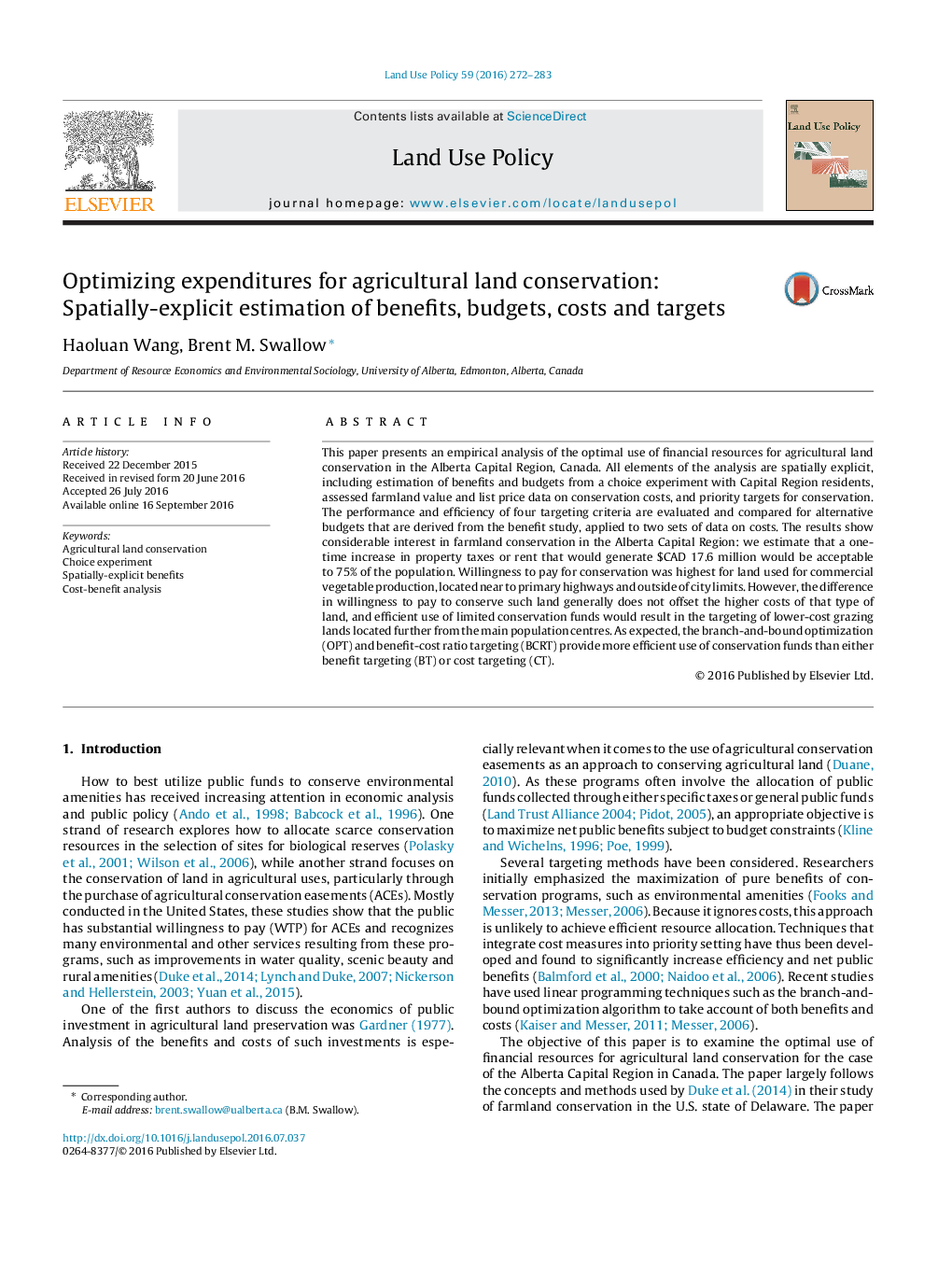| Article ID | Journal | Published Year | Pages | File Type |
|---|---|---|---|---|
| 6461530 | Land Use Policy | 2016 | 12 Pages |
This paper presents an empirical analysis of the optimal use of financial resources for agricultural land conservation in the Alberta Capital Region, Canada. All elements of the analysis are spatially explicit, including estimation of benefits and budgets from a choice experiment with Capital Region residents, assessed farmland value and list price data on conservation costs, and priority targets for conservation. The performance and efficiency of four targeting criteria are evaluated and compared for alternative budgets that are derived from the benefit study, applied to two sets of data on costs. The results show considerable interest in farmland conservation in the Alberta Capital Region: we estimate that a one-time increase in property taxes or rent that would generate $CAD 17.6 million would be acceptable to 75% of the population. Willingness to pay for conservation was highest for land used for commercial vegetable production, located near to primary highways and outside of city limits. However, the difference in willingness to pay to conserve such land generally does not offset the higher costs of that type of land, and efficient use of limited conservation funds would result in the targeting of lower-cost grazing lands located further from the main population centres. As expected, the branch-and-bound optimization (OPT) and benefit-cost ratio targeting (BCRT) provide more efficient use of conservation funds than either benefit targeting (BT) or cost targeting (CT).
